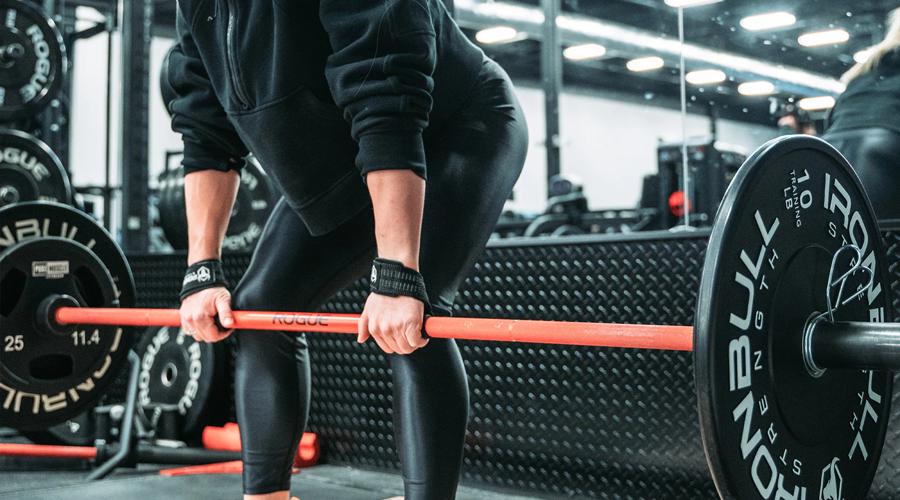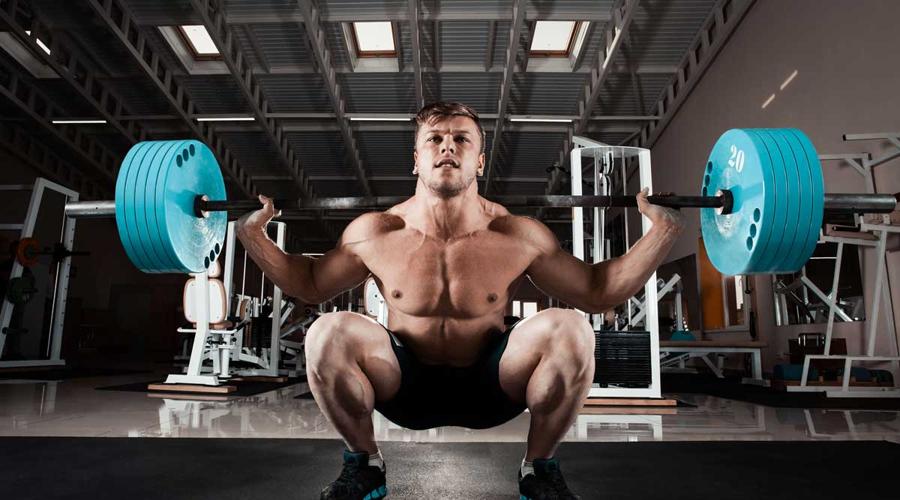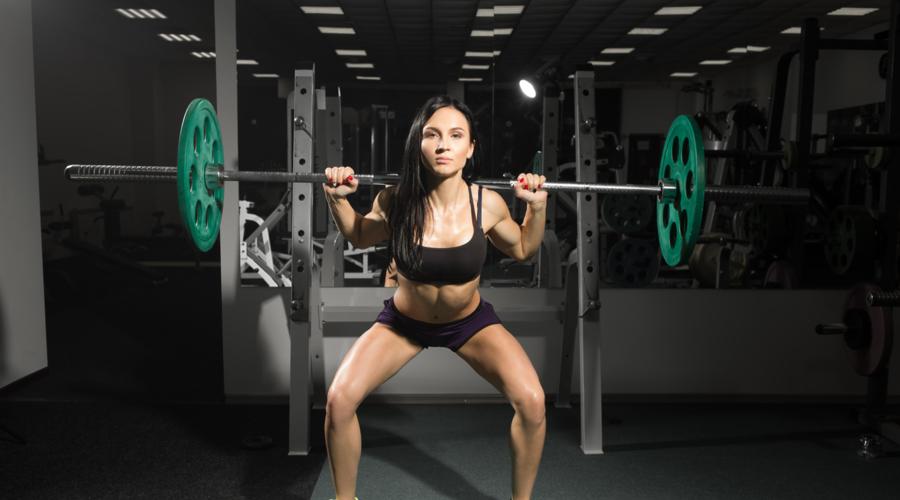
Are you ready to unleash your inner strength and achieve remarkable muscle gains? Look no further than powerlifting exercises. Whether you’re a seasoned lifter or just starting your fitness journey, powerlifting can revolutionize your training routine and help you reach new heights of strength and physique.
In this blog post, we’ll dive into the world of powerlifting exercises and explore how they can boost your strength and muscle gains. From the foundational squat, bench press, and deadlift to advanced variations and techniques, we’ll provide you with a comprehensive guide to maximize your results in the gym. So, grab your lifting belt and get ready to discover the secrets of powerlifting that can take your fitness game to the next level. Are you ready to lift heavy, break barriers, and transform your body? Let’s embark on this exciting journey together!
Importance of Powerlifting for Strength and Muscle Gains
Powerlifting is a training methodology that holds immense importance when it comes to boosting strength and muscle gains. Unlike other forms of weightlifting, powerlifting focuses on mastering three fundamental compound exercises: the squat, bench press, and deadlift. These exercises are known as the “big three” and are renowned for their ability to engage multiple muscle groups simultaneously, resulting in impressive overall strength development and muscle hypertrophy.
One of the key reasons why powerlifting is essential for strength and muscle gains is the principle of progressive overload. Powerlifters continually strive to lift heavier weights over time, challenging their muscles to adapt and grow stronger. This constant progression stimulates muscular adaptations, leading to increased muscle fiber recruitment, improved neuromuscular coordination, and enhanced overall strength.
Moreover, powerlifting exercises target major muscle groups, such as the quadriceps, hamstrings, glutes, chest, back, and shoulders, providing a well-rounded approach to muscular development. By focusing on compound movements that require multiple joints and muscles to work synergistically, powerlifting maximizes the efficiency and effectiveness of each training session, resulting in significant gains in both strength and muscle size.
Read more about Master Powerlifting Exercises

Click here to discover the benefits of powerlifting exercises.
The Foundation of Powerlifting: The Big Three
Squat
The squat is one of the three foundational lifts in powerlifting, along with the bench press and deadlift. It primarily targets the muscles in the lower body, including the quadriceps, hamstrings, glutes, and calves, while also engaging the core and upper body to a lesser extent.
The squat is performed by placing a barbell on the shoulders behind the neck or on the upper back and descending into a deep squatting position, bending at the hips and knees, and then rising back up to a standing position. It is essential to maintain proper form and technique throughout the movement to maximize strength gains and minimize the risk of injury.
When executed correctly, the squat is a highly effective exercise for building lower body strength, power, and muscle mass. It not only improves leg and hip strength but also contributes to overall athletic performance, as it mimics movements used in various sports and daily activities.
Bench Press
The bench press is another integral component of powerlifting and primarily targets the muscles of the upper body, including the chest (pectoral muscles), shoulders (deltoids), and triceps. It also engages the muscles of the back and core for stability and support.
To perform the bench press, an individual lies on a bench with their feet on the ground, unracks the barbell positioned above them, and lowers it to their chest before pressing it back up to arm’s length. The grip can vary, with a wider grip emphasizing the chest muscles and a narrower grip targeting the triceps more specifically.
The bench press is an effective exercise for developing upper body strength, size, and muscular endurance. It is widely used by powerlifters to gauge upper body strength and is also a popular exercise in general strength and fitness training. Proper form, including maintaining a stable and arched back, is crucial to prevent injury and maximize performance.
Deadlift
The deadlift is the third and final lift in the big three of powerlifting. It is a compound exercise that targets a wide range of muscles, including the back (erector spinae), glutes, hamstrings, quadriceps, and grip muscles. The deadlift also engages the core muscles, making it an excellent exercise for overall strength and stability.
To perform the deadlift, an individual stands behind a barbell with feet shoulder-width apart, bends at the hips and knees, grips the bar with hands just outside the legs, and lifts the barbell by extending the hips and knees until the body is in an upright position. The movement pattern simulates picking up a heavy object from the ground.
The deadlift is considered one of the most functional exercises as it translates well into real-life movements. It develops posterior chain strength, which is crucial for activities like lifting objects, sports performance, and overall lower body strength. It is important to maintain a neutral spine and engage the correct muscles during the lift to minimize the risk of injury.
Click here to explore the best powerlifting exercises for beginners.
Read more about Boxer Physique
Powerlifting Exercises – Main Lifts
Powerlifting exercises are a key component of strength training. The following table showcases the main lifts in powerlifting along with the targeted muscles and proper technique.
| EXERCISE | MUSCLES TARGETED | TECHNIQUE |
|---|---|---|
| Squat | Quadriceps, Hamstrings, Glutes, Lower Back | Start with feet shoulder-width apart, squat down by bending at the hips and knees, keeping the chest up and back straight, and then stand back up |
| Bench Press | Pectorals, Deltoids, Triceps | Lie on a bench, grip the barbell slightly wider than shoulder-width, lower it to the chest, and press it back up |
| Deadlift | Quadriceps, Hamstrings, Glutes, Lower Back, Trapezius, Forearms | Stand with feet hip-width apart, grip the barbell with hands shoulder-width apart, squat down to grab the bar, and then stand up by extending the hips and knees |
Powerlifting Exercises – Assistance Lifts
Assistance lifts are supplementary exercises that complement the main powerlifting lifts. The following table highlights some common assistance lifts, along with the targeted muscles and proper technique.
| EXERCISE | MUSCLES TARGETED | TECHNIQUE |
|---|---|---|
| Barbell Row | Rhomboids, Latissimus Dorsi, Biceps | Bend over with your back straight, pull the barbell towards your lower chest, and squeeze the shoulder blades together |
| Overhead Press | Deltoids, Triceps, Upper Back | Start with the barbell in front of your shoulders, press it overhead by extending your arms, and then lower it back down |
| Romanian Deadlift | Hamstrings, Glutes, Lower Back | Hold the barbell in front of your thighs, hinge at the hips to lower the barbell while keeping your back straight, and then return to a standing position |
| Dumbbell Bench Press | Pectorals, Deltoids, Triceps | Lie on a bench and hold dumbbells at shoulder level, lower them to the sides of your chest, and press them back up |
Beyond the Basics: Advanced Powerlifting Exercises
Overhead Press
The overhead press, also known as the military press or strict press, is an advanced powerlifting exercise that primarily targets the muscles of the shoulders (deltoids) and triceps. It also engages the muscles of the upper back, core, and even the legs to provide stability and support during the movement.
To perform the overhead press, an individual starts with a barbell in front of them, usually positioned at the collarbone level. They grip the bar with hands slightly wider than shoulder-width apart, lift it to the shoulders, and then press it directly overhead until the arms are fully extended. The movement should be controlled and not involve any leg drive or excessive use of momentum.
The overhead press is a challenging exercise that requires both strength and stability. It is an effective way to develop shoulder strength and size, improve shoulder stability, and enhance overall upper body pressing power. Variations of the overhead press, such as the push press or push jerk, can incorporate leg drive and generate more explosive power, making them suitable for athletes in various sports.

Assistance Exercises
Assistance exercises are an integral part of an advanced powerlifting program. While the big three lifts (squat, bench press, and deadlift) form the foundation, assistance exercises target specific muscle groups and movement patterns to address weaknesses, improve overall strength, and enhance performance in the main lifts.
There are numerous assistance exercises that can be incorporated into a powerlifting training program. Here are a few examples:
- Accessory lifts for the lower body: Exercises like lunges, Bulgarian split squats, leg presses, and leg curls can target specific leg muscles and address any imbalances or weaknesses.
- Accessory lifts for the upper body: These include exercises like dumbbell presses, incline presses, dumbbell rows, pull-ups, and dips, which target different muscle groups in the chest, back, and arms.
- Core exercises: Strengthening the core is crucial for stability and generating power in the main lifts. Exercises like planks, Russian twists, hanging leg raises, and weighted decline sit-ups can help develop a strong and stable core.
- Grip strength exercises: Powerlifters often benefit from improving grip strength. Exercises like farmer’s walks, plate pinches, and dead hangs can enhance grip strength and forearm endurance.
- Dynamic and explosive exercises: Exercises like box jumps, medicine ball throws, and kettlebell swings can improve explosiveness, power production, and overall athletic performance.
It is important to select assistance exercises that align with individual weaknesses and training goals. These exercises are typically performed with slightly higher repetitions and lower weights compared to the main lifts. They can be incorporated into a powerlifting program in a structured manner, either as part of the main workout or on separate training days, depending on individual needs and preferences.
Take action and unleash your inner powerlifter. Click here to learn more!
Read more about BCAA Drinks
Techniques and Tips for Optimal Results
To achieve optimal results in powerlifting, it’s essential to focus on programming and periodization, as well as prioritize recovery and injury prevention. Effective programming involves structuring training sessions, sets, and repetitions to progressively overload the body and stimulate strength gains. Periodization involves strategically planning training phases to optimize performance and avoid plateauing. Recovery and injury prevention are crucial for long-term progress, as they allow the body to repair, adapt, and minimize the risk of injuries.
Programming and Periodization
Programming and periodization play a vital role in optimizing powerlifting performance. Here are some key techniques and tips:
- Set clear goals: Determine your short-term and long-term goals in powerlifting. Whether it’s increasing your one-rep max, improving technique, or preparing for a competition, setting clear goals helps guide your programming and training.
- Structured training cycles: Implement a structured training cycle, typically divided into mesocycles (4-6 weeks) and macrocycles (3-6 months). Each mesocycle can have different emphasis, such as building strength, hypertrophy, or peaking for competition.
- Progressive overload: Gradually increase the intensity, volume, or complexity of your training over time. This progressive overload principle stimulates continuous adaptation and strength gains. Track your progress and aim to consistently improve.
- Variation and specificity: Include a variety of exercises and training methods to target different muscle groups and movement patterns. Incorporate variations of the main lifts, accessory exercises, and training techniques like paused reps or tempo training to address weaknesses and improve overall strength.
- Deload and recovery weeks: Plan regular deload weeks or recovery periods to allow the body to rest and recover. This helps prevent overtraining, reduce fatigue, and minimize the risk of injury.
- Tracking and analysis: Keep a training log to record your workouts, sets, reps, and weights lifted. Analyze your progress, identify trends, and make adjustments to your programming as needed.
Recovery and Injury Prevention
Recovery and injury prevention are vital for maintaining optimal performance in powerlifting. Here are some techniques and tips:
- Proper nutrition: Consume a well-balanced diet with adequate protein, carbohydrates, and healthy fats to support muscle recovery and growth. Stay hydrated and consider incorporating supplements like protein powders, creatine, or omega-3 fatty acids if needed.
- Sufficient sleep: Aim for 7-9 hours of quality sleep per night. Sleep is crucial for muscle repair, hormone regulation, and overall recovery.
- Active recovery: Engage in light activities like walking, swimming, or yoga on rest days to promote blood flow, reduce muscle soreness, and enhance recovery.
- Mobility and flexibility work: Include regular mobility exercises and stretches to improve joint range of motion and reduce the risk of injuries. Focus on areas prone to tightness or limited mobility, such as hips, shoulders, and ankles.
- Injury prevention exercises: Incorporate exercises that target stabilizing muscles and improve joint integrity. Examples include rotator cuff exercises, core stability exercises, and exercises that strengthen the posterior chain.
- Listen to your body: Pay attention to signs of overtraining or excessive fatigue. If you experience persistent pain or discomfort, consult with a healthcare professional or qualified coach to address any potential issues.
- Proper technique and form: Practice and refine your lifting technique to minimize the risk of injuries. Consider working with a coach or attending workshops to ensure proper form in the main lifts.

Final Thoughts
Powerlifting exercises are a challenging and rewarding sport that requires dedication, consistency, and a strategic approach. By focusing on the foundational lifts (squat, bench press, and deadlift), incorporating advanced exercises like the overhead press and assistance exercises, and implementing proper programming, periodization, recovery, and injury prevention techniques, you can maximize your potential and achieve optimal results.
Remember to set clear goals, track your progress, and make adjustments to your training as needed. Take care of your body through proper nutrition, sleep, and active recovery. Prioritize technique and form to minimize the risk of injuries and work with professionals or coaches when necessary.
Powerlifting is a journey that requires patience and perseverance. Celebrate your accomplishments along the way and enjoy the process of continuously challenging and improving yourself. With the right mindset, hard work, and a focus on technique and recovery, you can reach new levels of strength, power, and performance in powerlifting. Best of luck on your powerlifting journey!